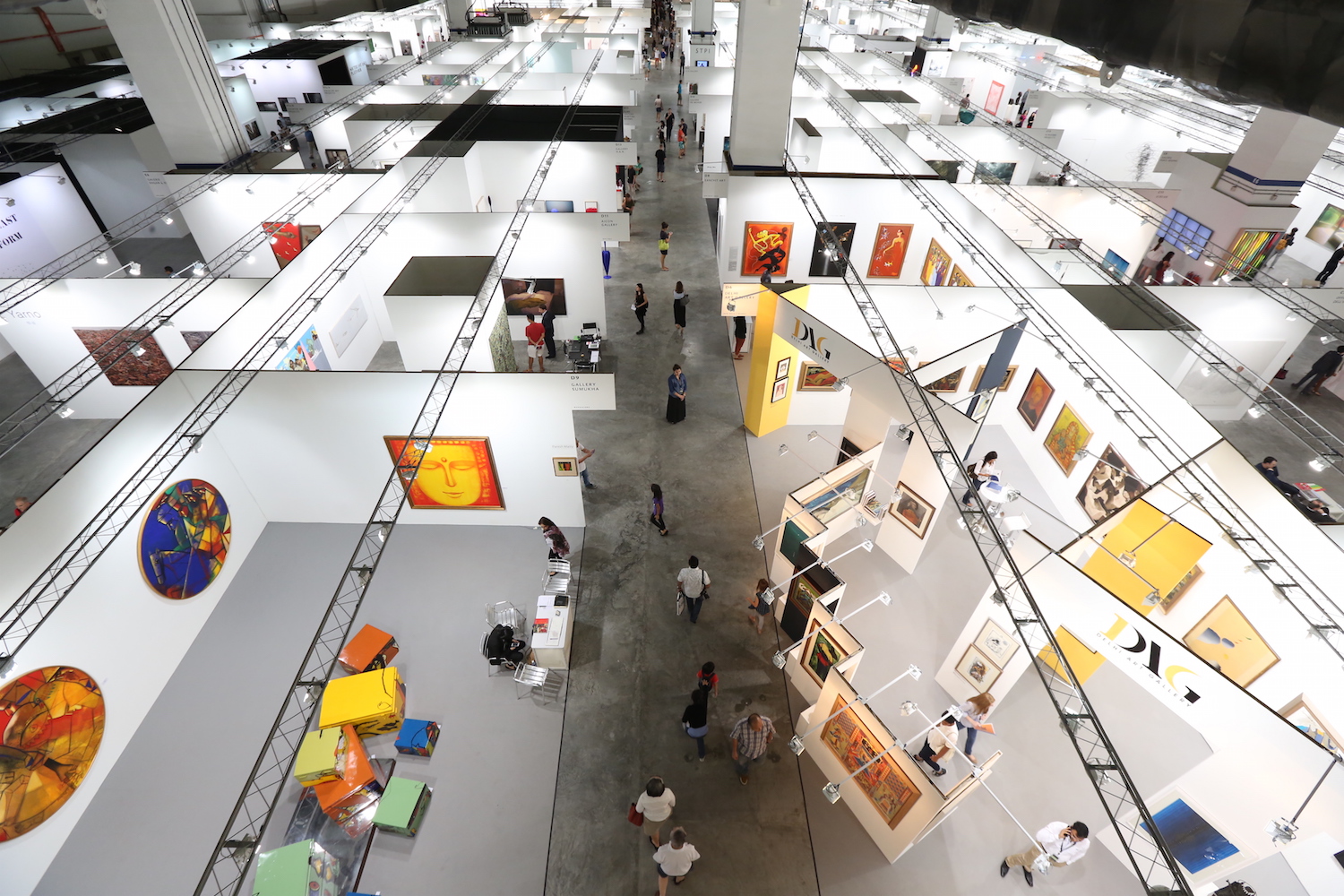Entitled “Hacking Conflict – Indonesia meets Nigeria,” the thirteenth edition of the Jogja Biennale opened on November 1 at the Jogja National Museum in Yogyakarta with a showcase of artworks by twenty-three Indonesian artists and twelve Nigerian artists. Flash Art caught up with director Alia Swastika.
Biennale Jogja XIII is the third edition of the “Equator Series,” following on from collaborations with India in 2011 and the Middle East in 2013. Can you discuss the reasons for choosing to engage with Africa and how the curatorial concept was developed?
We started on the equatorial belt, working westward from Indonesia, and we are going to make a circle around the world. So we started from India, then went further west to the Arab region, and now to Africa. West Africa is interesting for us due to the dynamics of contemporary art there being a bit similar to what happened here in Southeast Asia. We wanted to connect with an area with a similar art history, and I think Nigeria also represents strong contemporaneity in the African art scene today. We also want to start relationships through government institutions; therefore we chose countries where we have quite active embassies. The Indonesia Embassy in Nigeria is central for West Africa. Governments are usually not involved in these kinds of art events in Indonesia, but it is important for us to show our vision to our government. The curatorial concept was developed through extensive research by artistic director Rian Rosidi and curator Woto Wibowo (aka Wok the Rock) on the similarities and differences between both countries in relation to the post-colonial experience and their experiments towards democratization. And this led to the forming of the theme, “Hacking Conflict,” to see conflicts more as something progressive and challenging instead of merely obstacles.
On a sociopolitical and historical level, Indonesia and Nigeria share many similarities: they are both post-colonial countries that experienced years of authoritarian rule. Have you also noticed affinities between the art scenes?
A strong community has developed the art scene in both countries, which is self-sufficient and open to embracing the contemporary spirit of the global art world. With limitations regarding government support, artists from both countries have initiated lots of spaces, platforms for knowledge production and art education. Recently, both countries are seen as emerging markets, and this has created new connections and tensions within the local art scenes. Artists are struggling not to be dictated by market domination, but at the same time, they try to express political thoughts through their art projects, to emphasize their critical stance toward authoritarian regimes. By doing this, they attempt to interpret their history and to manifest their memories of the past in the spirit of new freedom.
Can you discuss this in relation to some of the works by participating artists?
The works of Maryanto and Victor Ehikhamenor explore the phenomenon of natural resources in both countries, and disasters that are caused by gaps in power — militarization, violence and corruption. Ndidi Dike portrays the everyday life of the people, focusing on the market and trading, and how local economics are grown in the spaces between global economic market forces and the intimate relationships of the common people. Irwan Ahmett and Tita Salina, in collaboration with Yudi Ahmad Tajudin, are looking into the history of Yogyakarta itself to better understand the genealogy of power, particularly in the context of democracy. Aderemi Adegbite, in a way, looks at the Muslim faith in both countries. The art collective Serrum’s project experiments with the notion of alternative education, and Olanrewaju Tejuoso builds alternative museums by inserting hidden and left-behind stories into central narratives.
Twenty-three Indonesian artists and twelve Nigerian artists have been grouped to work collaboratively. Can you shed light on this process of exchange and improvisation?
The curator has set up some platforms for discussion, mostly online, that have enabled artists to share ideas and offer invitations to collaborate. We sent two Indonesian artists to Lagos to observe the situation there and also to meet other artists in person. Now we have invited artists from Nigeria to stay in Yogyakarta for a month to create their works here and work with local communities. Along the way, many potential collaborations happen. So the collaborations are mostly based on how they respond to each other’s ideas or how they create connections from the different narratives scattered around.
The Jakarta Biennale, entitled “Maju Kena Mundur Kena” and curated by Charles Esche, also opened in November. The artistic centers in Yogyakarta and Jakarta play very different roles within the Indonesian art scene. What would you say are the defining characteristics?
They are very different. Jakarta has more complex urban problems, which perhaps one cannot find in Yogyakarta on such a big scale. Yogyakarta, historically, is more rooted in culture, education and tradition. Intellectualism has been a long tradition of the city, and therefore artists are considered more as part of an intellectual group. There is no art market in Yogyakarta. In Jakarta, for a long time, commercial galleries have dominated the art scene. The artist collective Ruangrupa, of which most of the organizers of the Jakarta Biennale are members, has had great success in creating an alternative movement in addition to the commercial institutions.


